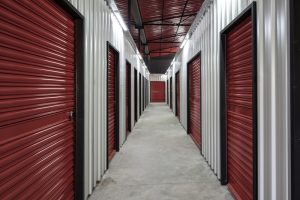
When it comes to ensuring the health and safety of your living environment, addressing mould issues promptly and effectively is crucial. Mould infestations not only pose serious health risks but can also lead to significant property damage if left unchecked. This raises an important question: how much does professional mould remediation cost? Let’s break it down together, keeping in mind that understanding these costs upfront can help you prepare financially for this essential service.
Factors Influencing Mould Remediation Costs
Several key factors can influence the overall cost of a professional mould remediation project. These include:
-
Extent of the mould infestation: Larger and more severe infestations will invariably cost more to remediate.
-
Location of the mould: Mould hidden behind walls or under floors can be more challenging (and thus, more expensive) to remove.
-
Type of materials affected: Some materials, such as porous surfaces, may require replacement rather than cleaning, increasing costs.
Average Cost Estimates for Mould Remediation
The cost of mould remediation can vary widely depending on the specifics of each case. However, homeowners can expect to spend anywhere from a few hundred to several thousand dollars on professional mould remediation services. Minor issues cost as little as $500, while extensive remediation projects could easily surpass $5,000.
Breaking Down the Costs
The following list provides a rough breakdown of potential costs associated with mould remediation:
-
Assessment and Inspection: Around $300-$500
-
Containment and air filtration: $200-$600
-
Removal and cleaning: Depends heavily on the project’s scale.
-
Repair and replacement of damaged materials: Can range from a few hundred to several thousand dollars.
Health Risks and Impacts
Mould infestations not only pose various health risks, particularly to those with allergies, asthma, or compromised immune systems, and addressing them will also incur costs. Understanding these risks underscores the importance of prompt and professional mould remediation:
-
Respiratory Problems: Exposure to mould can cause symptoms ranging from nasal stuffiness, throat irritation, coughing, or wheezing to more severe reactions in people with mould allergies or chronic lung illnesses.
-
Allergic Reactions: Mould can trigger allergic reactions in sensitive individuals, leading to symptoms such as sneezing, red eyes, skin rash, and fever.
-
Toxic Effects: Some moulds produce mycotoxins that can be harmful if ingested, inhaled, or come into contact with skin. Long-term exposure to these toxins can lead to more serious health issues.
Why Opt for Professional Mould Remediation?
DIY mould removal might save money, but hiring professionals ensures thorough eradication, preventing returns, health risks, and property damage with expertise and tools. In mould cleanup, turning to mould remediation companies for their specialized skills ensures all hidden mould is addressed, not just the visible infestations. These professionals come equipped with the necessary protective gear and use industry-standard techniques to remediate mould, safeguarding your home and health effectively.
Managing the Financial Aspects of Mould Remediation
Given the potential costs involved, it’s understandable to be concerned about how to manage the financial aspects of mould remediation. Here are a few tips:
-
Insurance: Check with your homeowner’s insurance to see if your policy covers mould remediation.
-
Quotes: Obtain multiple quotes from reputable professionals to ensure you’re getting fair pricing.
-
Financing: Some companies offer financing options to help manage the cost over time.
Preventative Measures and Maintenance
After investing in professional mould remediation, taking proactive steps to prevent future mould growth is essential for maintaining a healthy living environment and avoiding additional costs. Here are a few preventative measures and maintenance tips:
-
Humidity Control: Use dehumidifiers and air conditioners to keep indoor humidity levels below 60%.
-
Ventilation: Improve airflow in your home, especially in high-moisture areas like bathrooms and kitchens, by using exhaust fans and opening windows when weather permits.
-
Leak Repairs: Promptly address any leaks in roofs, windows, or pipes to prevent water accumulation that can encourage mould growth.
-
Routine Cleaning: Regular cleaning, especially of carpets and hard surfaces, can help prevent the accumulation of mould spores.
Investing in these preventive measures can significantly reduce the risk of future mould infestations and potentially save thousands of dollars in remediation costs over time.
When Additional Services Are Necessary
Property Restoration
Following successful mould remediation, property restoration becomes the next critical step. This process involves repairing or replacing any materials damaged by mould or the remediation process itself. Companies that specialize in this service, like PuroClean in Chatham, ON, offer comprehensive solutions to restore your property to its pre-damage condition, ensuring a safe and comfortable living environment.
Biohazard Remediation
Occasionally, mould infestations can be part of broader issues that may require biohazard cleanup. This is particularly true in cases of severe water damage, where mould growth accompanies other hazardous materials. Professional services, like PuroClean biohazard cleanup, are equipped to handle these complex situations, ensuring all contaminants are safely removed and your property is fully restored.
Final Thoughts
The cost of professional mould remediation is a vital investment in your health and property. It’s important to understand cost factors and prepare financially. Professional mould removal offers peace of mind by ensuring your home is safe and mould-free, going beyond mere removal to promote a healthier living environment. Seeking help from reputable professionals is essential for thorough and efficient mould management, protecting both your home and well-being.








